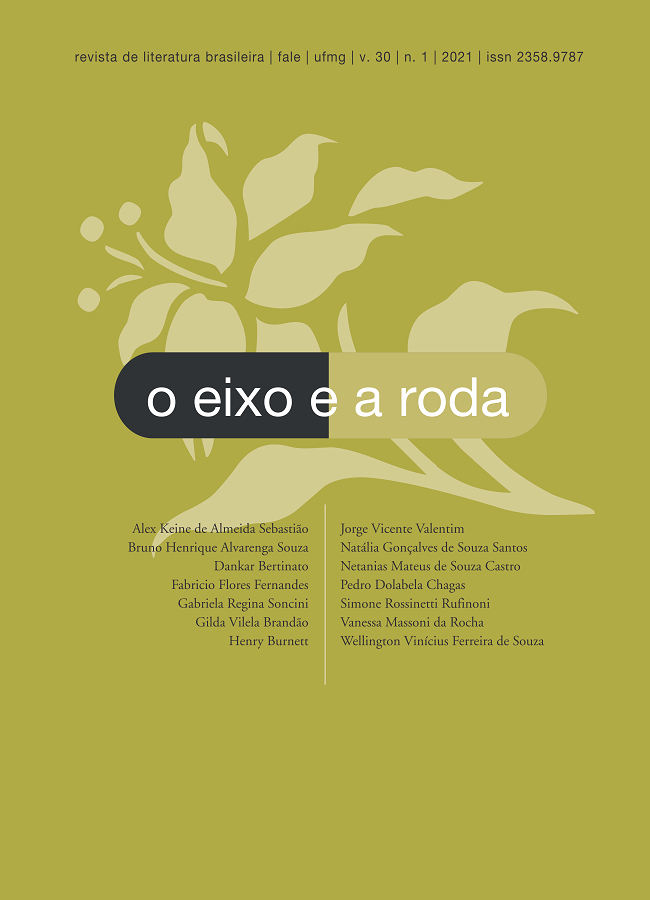The Fairies There
Fairy Magic in Tales “The Girl There” and “The Hunting to the Moon” by Guimarães Rosa
DOI:
https://doi.org/10.17851/2358-9787.30.1.233-251Keywords:
Guimarães Rosa, fairy, fantasy, fairy tales, characterAbstract
This article intends to read the character “Nhinhinha” from the tale “The Girl There” by Guimarães Rosa (1972), under the image of the fairy character figure. Such narrative is part of the book First Stories by the writer from Minas Gerais, Brazil. To complement the study regarding the image of the fairy, this work intends to analyze another narrative by Rosa (1970), the short story “The hunting to the moon”, which is part of the book Bird, Word, and who also presents as a character a girl who refers so much to her own “Nhinhinha”, to the fairy figure, this wonderful creature from the popular imagination present in traditional narratives. This reading will use theoretical writings by J.R.R.Tolkien (2015), Italo Calvino (2010), Kátia Canton (1994), in addition to bringing theoretical postulations by Maurice Blanchot (2011) about the literary space of magic, the imaginary and the place of childhood. Scores by Giorgio Agamben (2007) will also be brought with regard to the fairy figure as a helper, that is, an aid character, that provides another view in relation to what has already been seen daily. Other theoretical postulations will be raised in relation to the fairy character brought from Celtic mythology, and traditional fairy tales, to understand the fluid form between life, death, magic, charm and strangeness, that the characters of these girls present in Rosa’s narratives.
Downloads
References
AGAMBEN, Giorgio. Profanações. São Paulo: Boitempo, 2007.
ANDRADE, Paulo Fonseca. Retira a quem escreve sua caneta: Guimarães Rosa e a subtração da escrita. 2001. Dissertação (Mestrado em Estudos Literários) – Faculdade de Letras, Universidade Federal de Minas Gerais, 2001.
BENJAMIN, Walter. Manhã de inverno. In: ______. Rua de mão única. São Paulo: Editora Brasiliense, 1995.
BLANCHOT, Maurice. O espaço literário. Rio de Janeiro: Rocco, 2011.
CALVINO, Italo. Coleção de areia. São Paulo: Companhia das Letras, 2010. p. 140-144.
CAMARANI, A. L. S. A poética de Charles Nodier: Contendo a tradução de A fada das migalhas. São Paulo: Annablume; FAPESP, 2006.
CANTON, Katia. E o príncipe dançou... Os contos de fadas, da tradição oral à dança contemporânea. São Paulo: Ática, 1994.
COELHO, Nelly Novaes. O Conto de fadas. 1. ed. São Paulo: Ática, 1987.
COVIZZI, Lenira Marques. Uma ficção insólita num mundo insólito. In: ______. O insólito em Guimarães Rosa e Borges. São Paulo: Ática, 1978.
GELDER, Dora Van. O mundo real das fadas. São Paulo: Pensamento, 1990.
GUADALUPI, Gianni; MANGUEL, Alberto. Dicionário de lugares imaginários. São Paulo: Companhia das letras, 2003.
LOBATO, Monteiro. Histórias diversas. São Paulo: Editora Globo, 2011.
MALLARMÉ, S. Divagações. Florianópolis: Editorada UFSC, 2010.
PERRAULT, Charles. Contos de fadas. São Paulo: Companhia Editora Nacional, 2002.
PERRONE-MOISÉS, Leyla. Promessas, encantos e amavios. In: ______. Flores na escrivaninha. São Paulo: Companhia das Letras, 1990. p. 13-20.
ROSA, João Guimarães. Ave, Palavra. Rio de Janeiro: José Olympio, 1970.
ROSA, João Guimarães. Primeiras Estórias. 6. ed. Rio de Janeiro: José Olympio, 1972.
TOLKIEN, J. R. R. Árvore e folha. São Paulo: Editora WMF Martins Fontes, 2013.
TOLKIEN, J. R. R. Ferreiro de Bosque Grande. São Paulo: Editora WMF Martins Fontes, 2015.




 Esta obra está licenciada com uma Licença
Esta obra está licenciada com uma Licença 